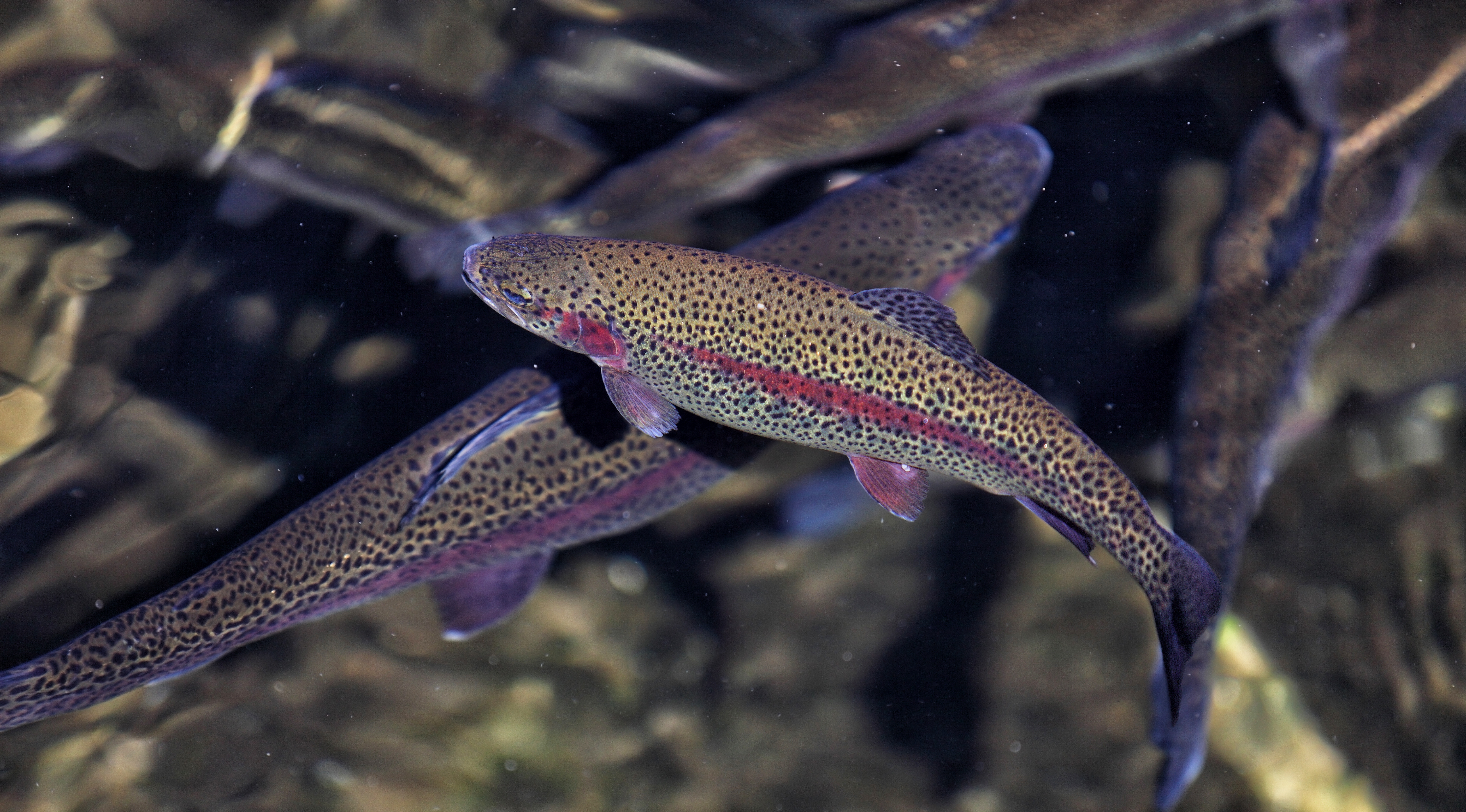VCPR and Aquaculture in Ontario
The following case study reviews the establishment and maintenance of a valid Veterinarian-Client-Patient Relationship (VCPR) between a veterinarian and an Ontario fish farmer. Bullet points are provided throughout the case study to highlight key actions and discussion points essential to this process.
Case Outline
Dr. Donald Blake practices large animal (predominantly bovine) medicine in a small town near Georgian Bay, Ontario. Recently, he has received a number of calls from fish farmers concerned that their current veterinarian will no longer be offering services throughout the province. Dr. Blake knows there are a number of large hatcheries within his practice area, and upon hearing this news he was eager to get involved with and gain additional knowledge about Ontario aquaculture.
After some searching, Dr. Blake found and enrolled in an online course on aquaculture medicine. The short course provided a wealth of information and resources that he can incorporate into his practice with fish farmers. He was also able to establish correspondence with one of the other veterinarians involved in the course who has several years of experience working in freshwater aquaculture.
Subsequently, Dr. Blake contacted one of the trout operations that had reached out to him and informs its manager that he is willing to serve as their veterinarian. Dr. Blake then arranges a meeting at the operation.

During the on-site meeting, Dr. Blake discusses with the owner, George Bell, the scope of the medical, consultative, and diagnostic services that he is comfortable providing, including instructions on how to contact the clinic in case of treatment concerns or other emergencies. Dr. Blake also informs George that all of his services must be in line with the practice standards set out by the College of Veterinarians of Ontario (CVO).
- Dr. Blake has:
- Reached an agreement with George as to the scope of the services to be provided by the veterinarian
- Ensured that he is readily available in case of treatment concerns, and informed George of how to access services outside of the regular practice hours, in accordance with the CVO After-Hours Care policy statement
- Advised George that services will only be provided in accordance with the standards of practice of the profession
George agrees with all of these discussion points, and tells Dr. Blake that he wishes to become a client.
- Dr. Blake has been retained by George (the client)
While Dr. Blake is at the hatchery, George shows him a group of fingerlings that have been experiencing above-average mortality rates. Water temperature in the group is averaging 13°C. Relying on his newly-acquired knowledge and skills in fish medicine and pathology, Dr. Blake assesses the group and examines several dead fish. A few fish have deep ulcers on the surface of the exposed skin and extend into the musculature of the body wall. Dr. Blake also notes exophthalmia, distended abdomens, and petechiae at the base of the fins of several fish. Internally, Dr. Blake notes edematous kidneys, and one fish has an enlarged spleen. The liver in some of the fish appears pale, and there are signs of peritonitis with more petechial hemorrhages. Dr. Blake is strongly suspicious of furunculosis (Aeromonas salmonicida) and sends several tissues to the diagnostic lab for confirmation. In the meantime, Dr. Blake sends a prescription to the local feed mill for florfenicol to be added to the feed to prevent further losses.
- Dr. Blake has attained recent and sufficient knowledge of the operation and the group of fish in question to provide veterinary services. What constitutes “recent and sufficient knowledge” is a matter of Dr. Blake’s professional judgment in each case
When making a diagnosis or prescribing, administering, or dispensing a drug, recent and sufficient knowledge is a matter of:
- History and inquiry and:
- a physical examination of the fish
OR
-
- medically appropriate and timely visits to the premises where the fish are kept to reach at least a general or preliminary diagnosis
Test results soon confirm the presence of furunculosis in the hatchery.
George continues to work with Dr. Blake on an ongoing basis to improve his biosecurity, standard treatment protocols, vaccination strategies, and general management practices that will ensure his fish remain healthy and productive. They schedule monthly meetings to ensure the lines of communication remain open.
- Dr. Blake continues to maintain recent and sufficient knowledge of George’s operation to enable him to provide veterinary services, including prescriptions for medication when necessary